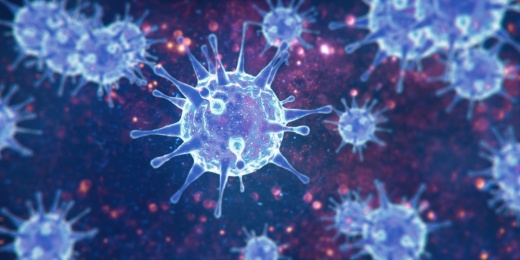As COVID-19 cases in Texas are on the rise and variants of the virus are identified, Community Impact Newspaper spoke with Dr. Ian Glass, Houston Methodist Willowbrook's chief quality officer, to learn more about the variants, the uptick in cases, and what people can do to protect themselves.
This interview has been edited for length and clarity.
Over the past month, what are some trends that have caught your eye in regards to COVID-19 case data in Texas?
The Texas Medical Center provides stats that change weekly, and the stats that I look show that for around six to eight weeks, we were at a reproduction rate that was below one. ... Anything that’s below one means the virus is being stamped out. The work being done in terms of social distancing, mask wearing and vaccination was being effective in lowering the reproduction rate of the virus.
The delta virus has a much easier way of transmitting to people, because it is a mutation of how the virus attaches itself to cells. It also is able to hide itself from the immune system much easier.
So we looked at the reproduction rate, which is now 1.5 to 1.7, and the number of new cases. The amount of new cases in Harris County went from 122 to 398 in the span of a week. In this past week it climbed to around 600, which are all signs that show you that the virus is rapidly expanding.
The final thing we look at is the ICU capacity, or number of beds to put sick people in. The good news is that the ICU capacity in Harris County is not being stretched at this time. However, the hospitals are not just taking care of COVID patients, but also general patients that had been put off in the first year of the pandemic, which means we now have an increasing number of COVID patients and patients suffering with other illnesses.
How would you describe hospitals' preparedness to take in a spike of cases?
There’s a couple of pieces around that, No. 1 being that we don’t know what [this] surge is going to mean. We need to keep in mind that we have a much better arsenal in terms of medications and techniques to help sick people get healthy compared to last year, and if you give those early on, it will prevent people from having to stay for prolonged periods. ...
A lot of the strain on hospitals has to do with staffing, because there aren’t enough nurses in the area to match the number of openings. ... We feel that we have a very good idea around it. We do not believe that we’re going to be overwhelmed, and we can go on to care for the entire population. However it would be very nice if people would vaccinate themselves, since vaccinated people would not have a significant disease burden on us.
How worried should we be about outbreaks among vaccinated people?
Both the Pfizer and Moderna vaccines are 95% effective. ... So the more there is an infectious agent in the environment, then even if you’ve been fully vaccinated, we cannot tell who’s going to be resistant to that virus and who isn’t. However what we do know is that by and large the more people that are vaccinated, then the less likely it is that they would ever be in a carrier state, and that’s really important because the less number of hosts the virus has to set up shop again ... and when that number falls, the less mutations there are. And when the mutations fall, so do the variants.
The vaccines we have are effective against all the variants out there. There is no vaccine-resistant variant that’s existed. However the viruses that we know, like the delta variant and the lambda variant that came out of Peru—I think they reported [Monday] that Houston Methodist isolated its first case of that. But the vaccines work against all of them. I think that’s part of the piece.
Can we expect larger surges over the summer and early fall due to variants?
At this point in time no one knows the answer to that exactly; however, if you consider the fact that we basically had no flu season last year, part of the reason was mask-wearing as well as hand-washing, hand sanitizer and cleaning down surfaces. We also had a strikingly low incidence of strep throat, MRSA infections, you name it. That shows you the power of really adhering to good cleaning techniques and sterility.
What we’re facing now is that society has reopened itself, and we have people who don’t want to wear masks anymore, and they may not be washing their hands or cleaning surfaces that others are working on. So there will be more transmission of infectious agents in general.
COVID, on the other hand, if we can continue to immunize people in the community, that will be key to turning the corner. You would need 85% or more of the population to be vaccinated or have had the infection naturally, so to speak, for the virus to burn itself out.
Do you think we will need to return to mask mandates?
I don’t think we will get back to mask mandates everywhere, nor do I think that’s necessary. What I do think is that we need to not bury our heads in the sand and be realistic about what this infectious threat is to ourselves, our loved ones, and that it’s unpredictable in who gets it and is asymptomatic and who gets it and ends up in the ICU.
So what are the things people can do to lower their risk as much as possible? Those are to get vaccinated, wear your mask when you’re indoors in a large group, or if you’re going to be in a crowded place like an airline terminal, those are the kinds of things people can do. And also continue to carry hand sanitizers, wash their hands and clean surfaces. ... We should also have respect for each other
We shouldn’t demonize people who choose not to vaccinate, but ... we should out of a sense of love and compassion show them how getting vaccinated can help their community. It should not be so much about “I” and “me” but “we.” But that’s my philosophy on life in general, and why I’m in health care.





